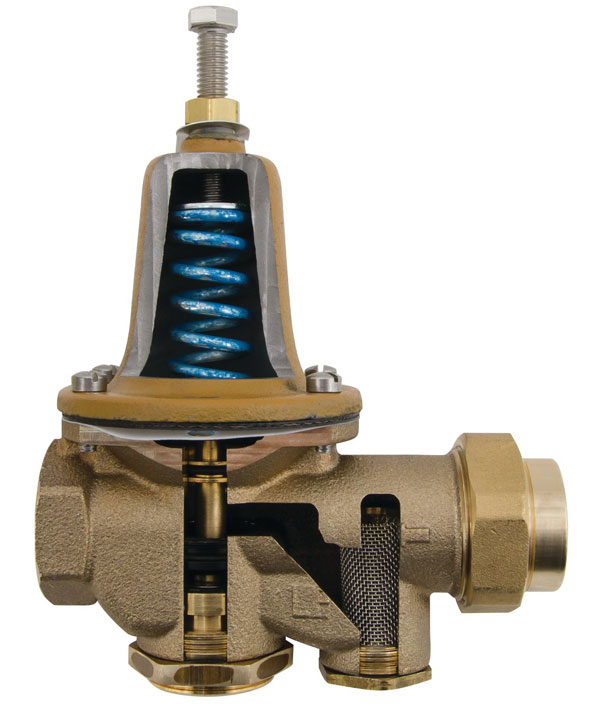Slicker
New Member
Hi everyone. Moved into a new house a few years ago and had somewhat mediocre shower pressure in the upstairs bathroom. I adjusted the PRV (a Zurn NR3XL 3/4") at the water main so that we had 60 PSI static pressure measured at the tank-less water heater cold intake service port a couple of feet from the PRV. This appeared to solve the shower issue for the most part except if any other faucet in the house was turned on. Then the pressure in the shower was weak again.
I went ahead and read the pressure (again at the cold water service port) with a single faucet open (dynamic pressure?) and it only reads 40 psi. Based on the literature I found online regarding this PRV, I think I should only be seeing a 20 psi drop if the flow was 20gpm which I'm pretty sure this single faucet is nowhere near flowing. Again this is with a 3/4" PRV and 3/4" PEX tubing leading to and from it. I don't know the diameter of the water main in the basement but it looks larger than the 3/4" PEX leading from it so I'd guess it was closer to 1". Unfortunately, I also don't know what the pressure is before the PRV. This is a new subdivision so I'd think the exterior water lines would be in good condition.
Is it likely that this PRV is defective or otherwise needs maintenance (clogged intake screen)? I thought I'd try asking here before trying to clean the screen or replacing it.
Thanks in advance.
I went ahead and read the pressure (again at the cold water service port) with a single faucet open (dynamic pressure?) and it only reads 40 psi. Based on the literature I found online regarding this PRV, I think I should only be seeing a 20 psi drop if the flow was 20gpm which I'm pretty sure this single faucet is nowhere near flowing. Again this is with a 3/4" PRV and 3/4" PEX tubing leading to and from it. I don't know the diameter of the water main in the basement but it looks larger than the 3/4" PEX leading from it so I'd guess it was closer to 1". Unfortunately, I also don't know what the pressure is before the PRV. This is a new subdivision so I'd think the exterior water lines would be in good condition.
Is it likely that this PRV is defective or otherwise needs maintenance (clogged intake screen)? I thought I'd try asking here before trying to clean the screen or replacing it.
Thanks in advance.

